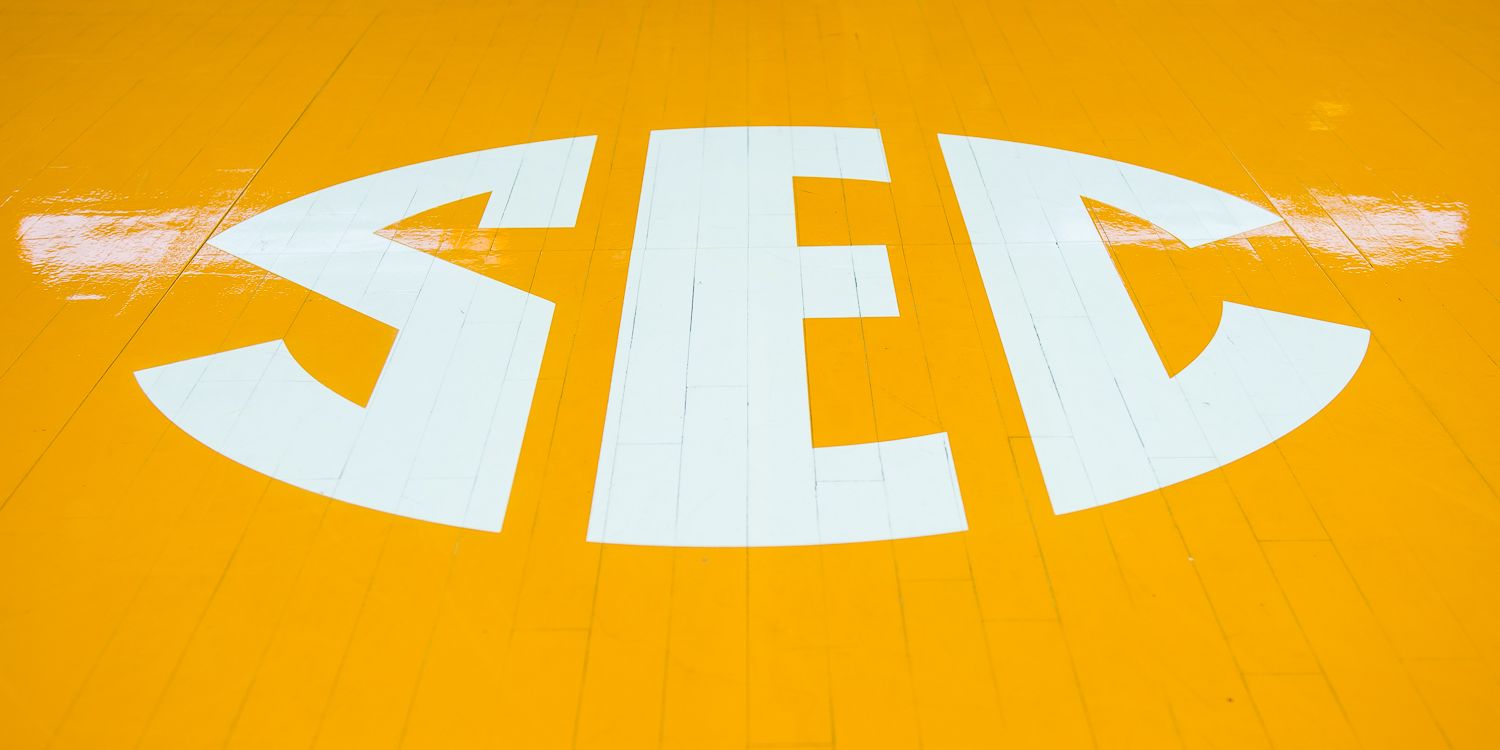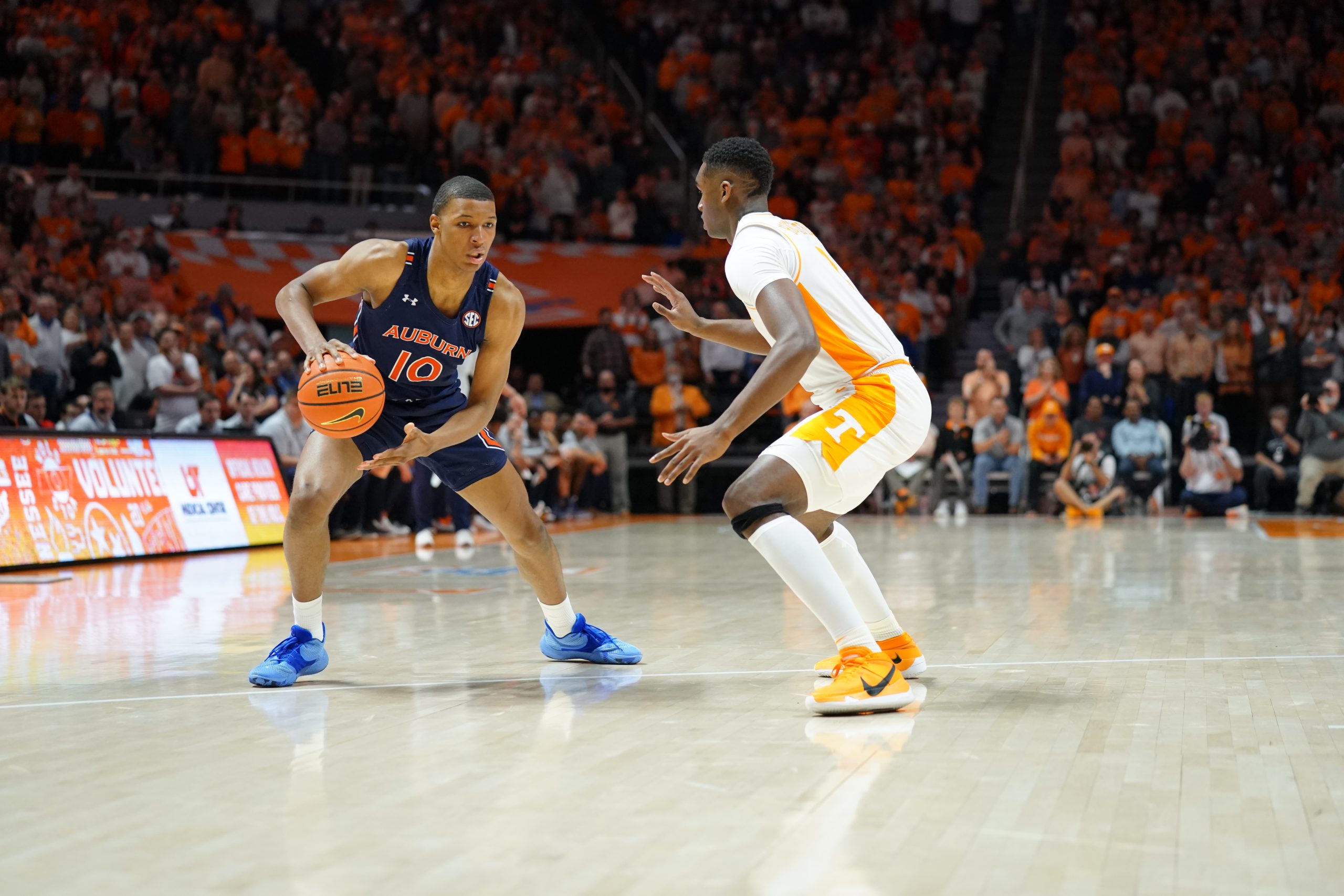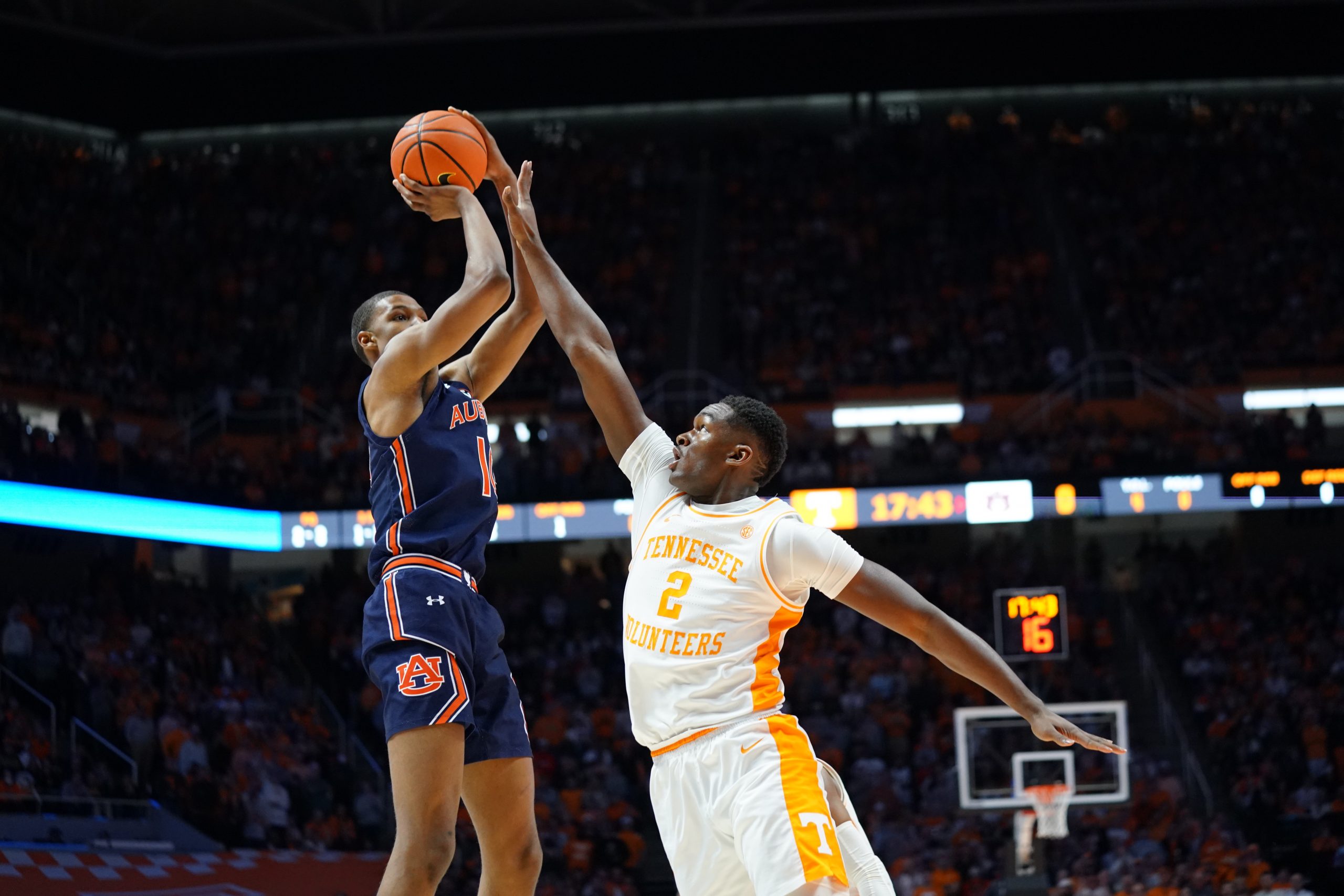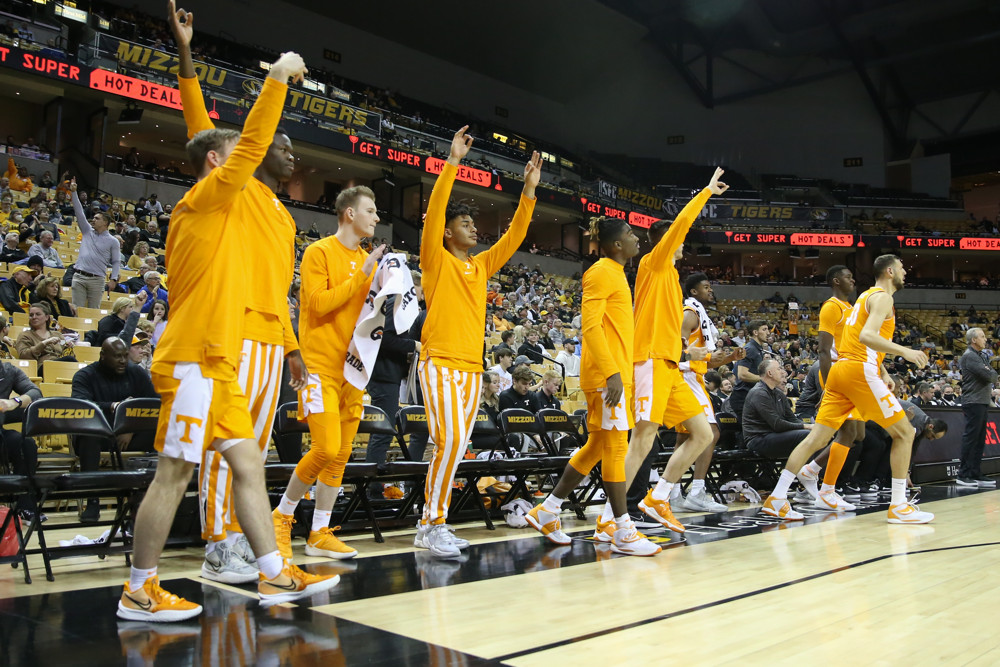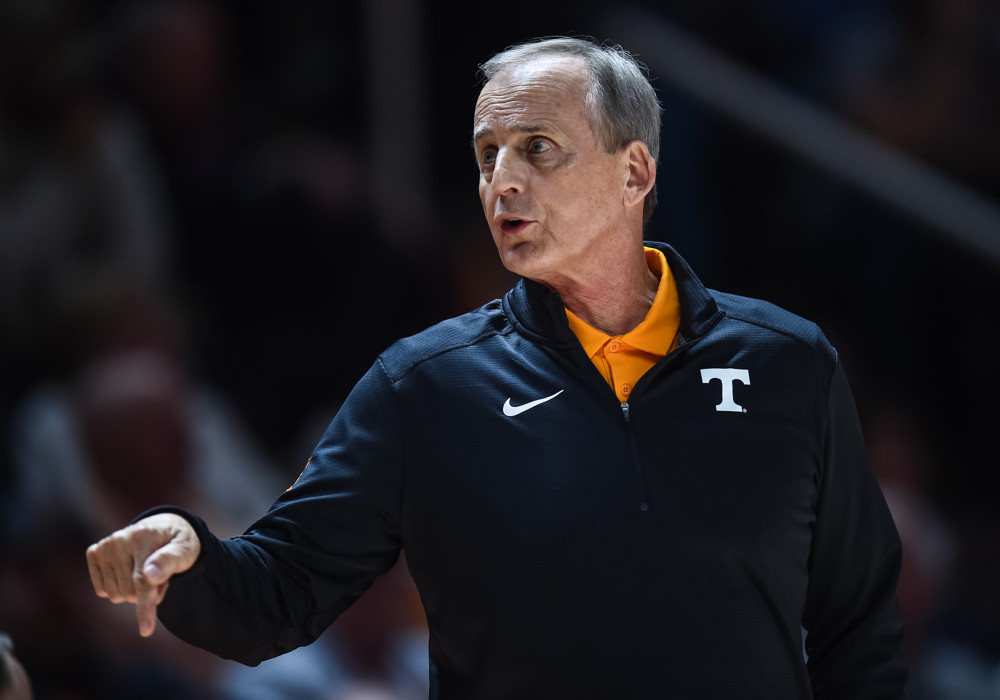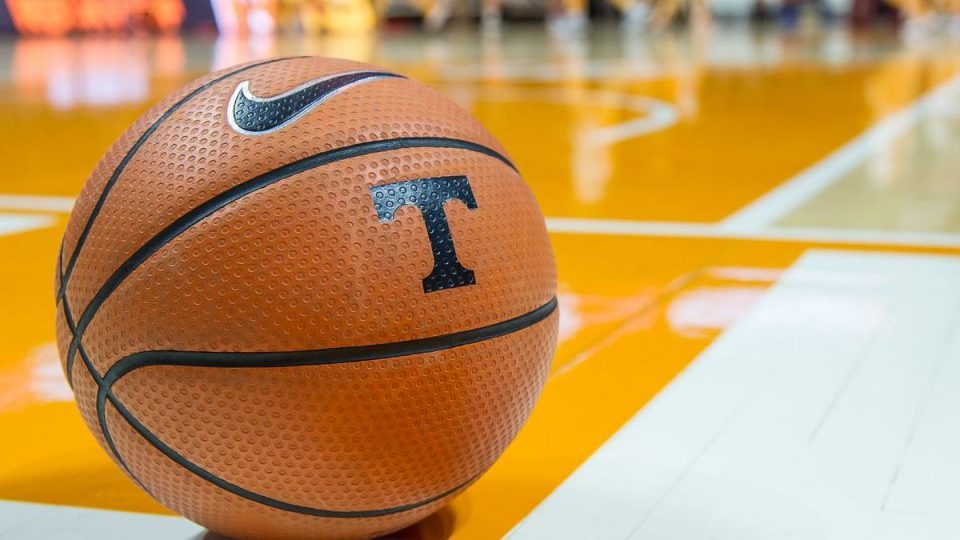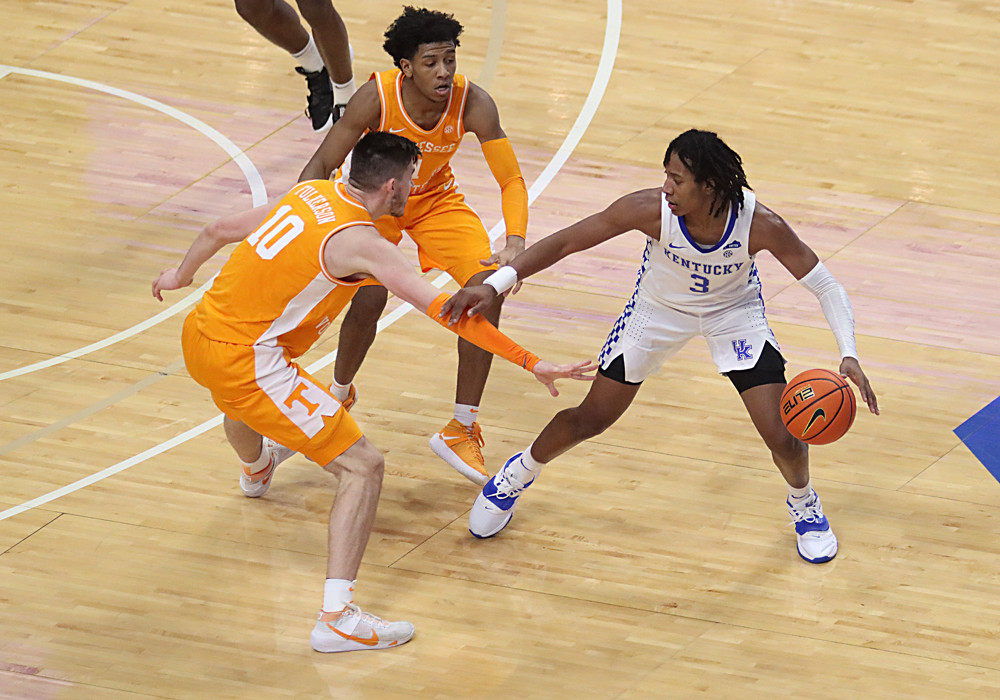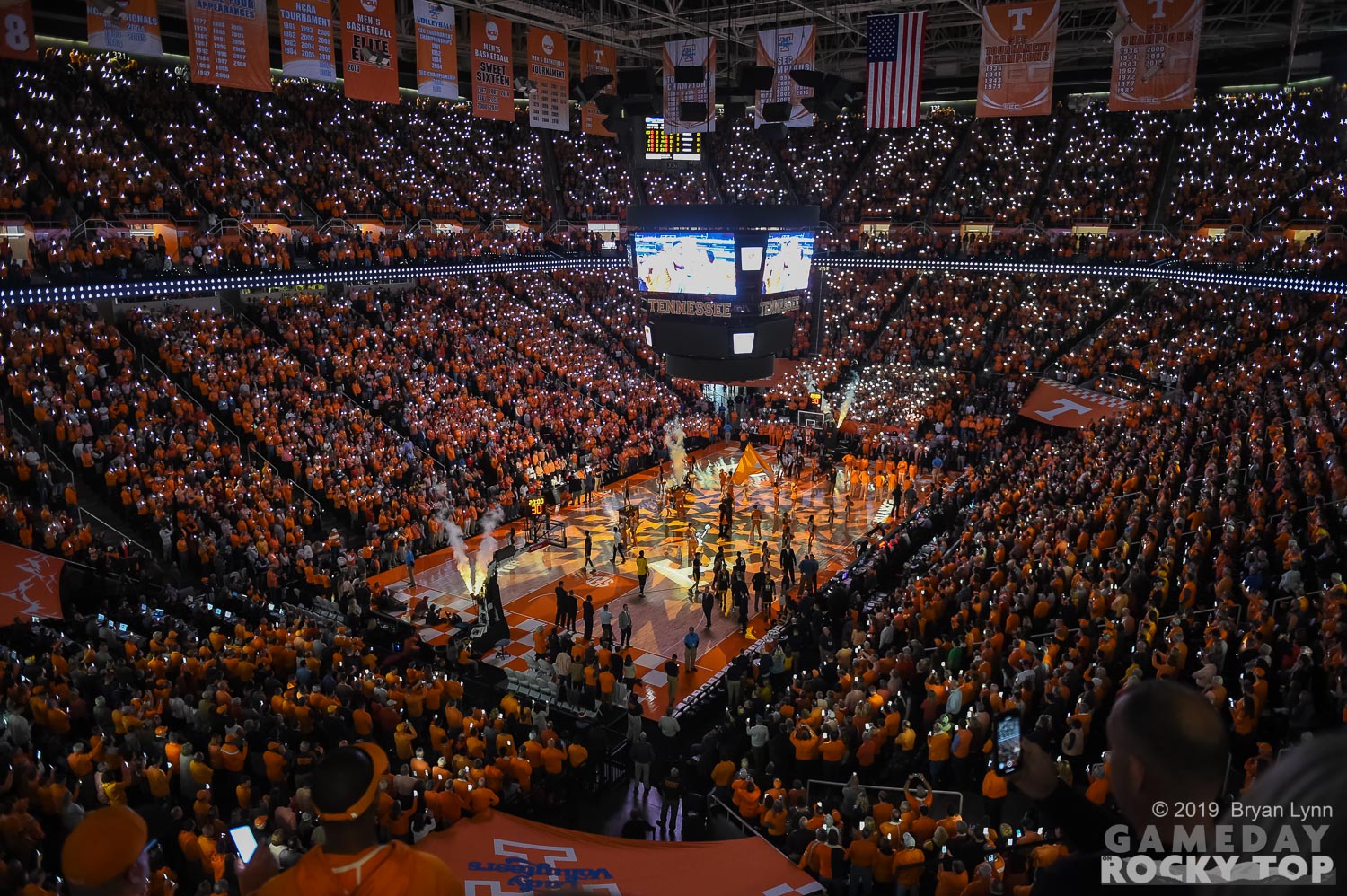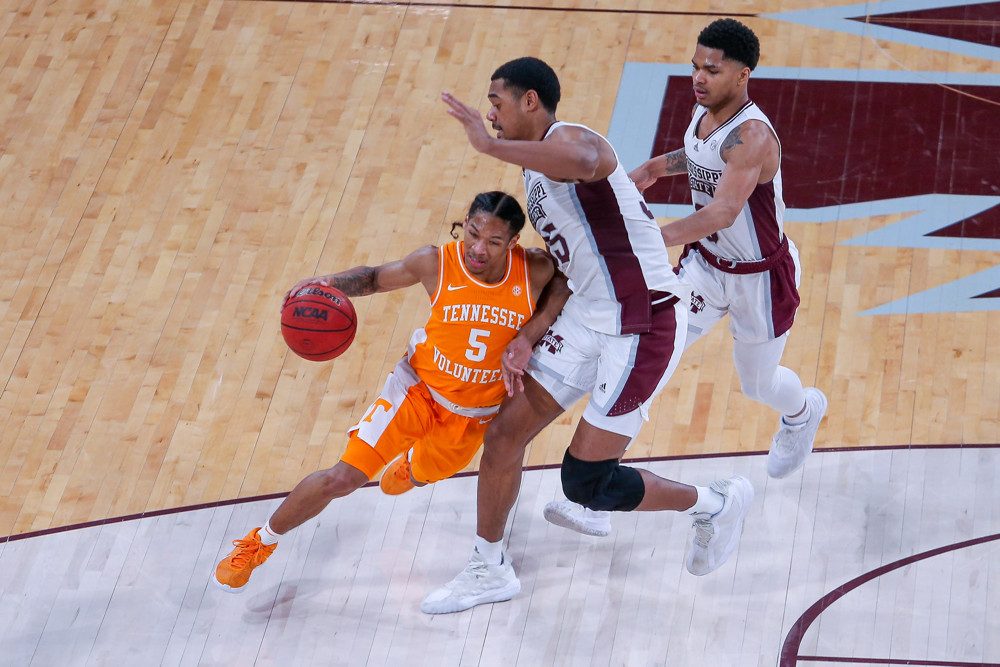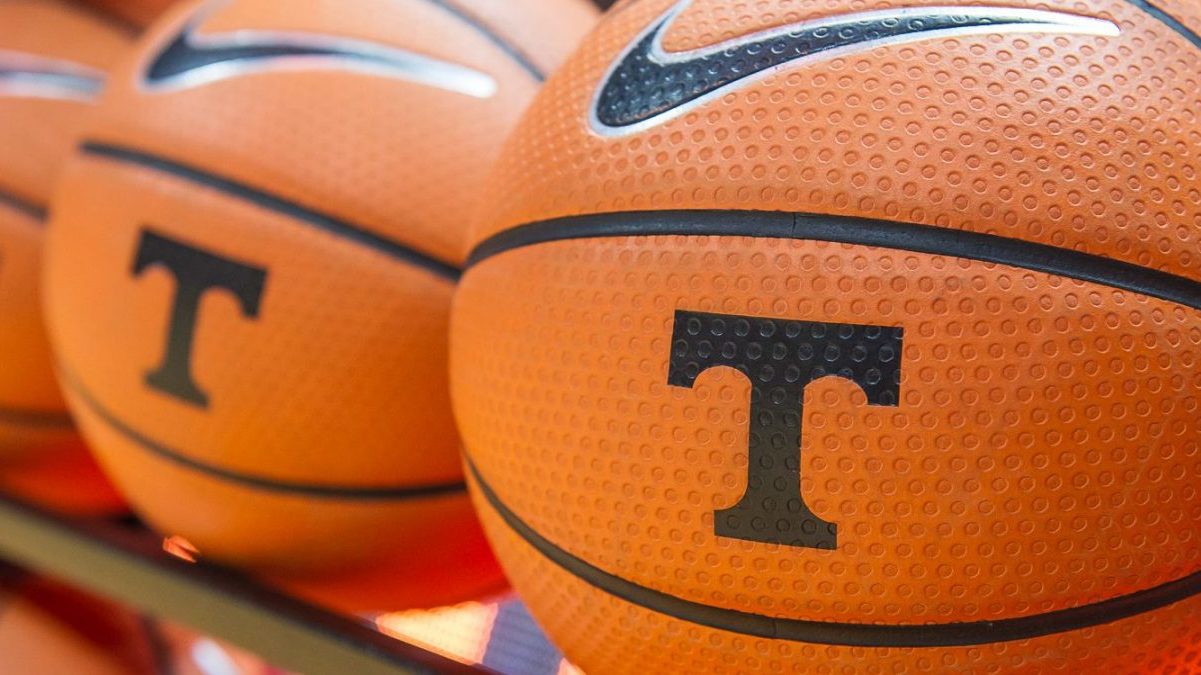Tennessee’s win over Auburn was the program’s 13th victory over a Top 5 team in the last 17 seasons: seven for Bruce Pearl, six for Rick Barnes. And there may be additional opportunities this season, as early as two weeks from now in Tampa.
Yesterday felt like a celebration of Tennessee basketball. And in that spirit, here’s a quick look back at each of those 13 wins.
2006: Tennessee 80 #2 Florida 76 (Knoxville)
I’m from Knoxville, but have lived in southwest Virginia for 10 of the last 16 years. So a couple of the loudest crowds people always reference – Lofton over Durant, and all of the huge home wins this season – I’ve missed. So in my personal experience, this game is the loudest I’ve ever heard Thompson-Boling Arena. There are different kinds of great crowds, depending on your role as the favorite or the underdog, the rivalry, etc. This was just a bewildered audience: Tennessee was 11-3 coming in, but all our significant outcomes had happened on the road. In Bruce Pearl’s first season and four years removed from the NCAA Tournament, you just weren’t sure what Tennessee could really do in a game like this. And the Vols rewarded all comers with 29 from Chris Lofton, plus a game-winning steal and dish to Dane Bradshaw. This January Saturday made it feel like anything was suddenly possible…and for much of the next 17 years, it has been. Speaking of the Gators…
2007: Tennessee 86 #5 Florida 76 (Knoxville)
Florida won the national championship in 2006, then brought all their guys back. They beat us 94-78 in Gainesville while Lofton sat out with an ankle injury. At 24-2 (11-0), they lost a couple games on the road and fell to fifth in the poll. But everyone knew their ceiling was highest in an incredible year for college basketball, including Kevin Durant with Rick Barnes in Texas. If you weren’t there or were too young for it, it’s hard to describe what it was like to watch Al Horford and Joakim Noah and these guys warm up, and think to yourself, “We have to do everything right to win.” And the Vols did everything right: 21 for Lofton, 20 turnovers for Florida, and a third win over what would soon become the two-time champs. This night was a celebration of Tennessee, with Peyton Manning in the house and the late, great Pat Summitt singing Rocky Top.
2008: #2 Tennessee 66 #1 Memphis 62 (Memphis)
Circumstances that will be impossible to duplicate for the rest of our lives: 1 vs 2, Pearl vs Calipari, undefeated rival. The game itself was not a work of art. But the Vols got it from everywhere: JaJuan Smith kept us alive early, Tyler Smith kept us alive late, and Wayne Chism & J.P. Prince were sensational on both ends of the floor throughout. This thing tipped off at 9:00 PM at the end of the longest day of anticipation any of our basketball teams has ever faced. And the celebration lasted deep into the night; in some parts of the state, I’m sure it’s still going.
2010: #16 Tennessee 76 #1 Kansas 68 (Knoxville)
The least likely of any of these wins. Tennessee had four players dismissed or suspended nine days earlier, then got just 14 minutes from Prince and 19 from Chism due to foul trouble. But Scotty Hopson had 17, and Bobby Maze almost got a triple-double with 16 points, 7 rebounds, and 8 assists. Renaldo Woolridge shot 31.9% from the arc in 2010, making just 15 threes all season. Four of them were in this game. Skylar McBee’s three to beat the shot clock is another loudest moment in TBA contender. And 2010 was just getting started…
2010: #19 Tennessee 74 #2 Kentucky 65 (Knoxville)
We still talk about comparing Kentucky teams to Calipari’s first, which made John Wall and DeMarcus Cousins instant rock stars. The one-and-done Cats were 27-1 (12-1) coming into this one. But they weren’t great at the three ball. And by not great, I mean 2-of-22 in this game. The Vols were up 11 at halftime, and up 19 with 14 to play. Kentucky tied it with two minutes to go. But J.P. Prince gave the Vols the lead back, and Scotty Hopson hit another shot-clock beating three with 41 seconds to play to seal it.
2010: #15 Tennessee 76 #5 Ohio State 73 (Sweet 16)
Tennessee’s only trip to the Elite Eight came through #2 seed Ohio State, who broke Vol hearts three seasons earlier in the same round. Unlike some of the others on this list, this was a tremendous basketball game from start to finish, including a frantic final few minutes. Evan Turner scored 31 for the Buckeyes. But Wayne Chism had 22 and 11 for Tennessee, Prince added 14, and the Vols got 11 off the bench from Cameron Tatum. Prince blocked Turner on the final shot, and Tennessee danced where it hadn’t danced before.
2011: #11 Tennessee 83 #3 Pittsburgh 76 (Pittsburgh)
Peak Scotty Hopson: 27 points on 10-of-13 shooting, plus 19 from Melvin Goins, and the Vols simply ambushed the Panthers. Tennessee was a crisp 7-of-11 from the arc in this one, moving the Vols to 7-0 on the season. It got away from everyone from there, but this was as good of a performance as any game on this list.
2017: Tennessee 82 #4 Kentucky 80 (Knoxville)
The year before, in Rick Barnes’ first season, the Vols surprised Kentucky with a big comeback win. This time, it was good basketball throughout. Robert Hubbs scored 25, Admiral Schofield added 15 off the bench, and freshman Grant Williams, hello: 13 points, 6 rebounds, 6 assists, 3 steals, 4 blocks. Much of that with Bam Adebayo going at him. In the moment, it felt like a great win to get your season going toward the NIT, which the Vols ultimately missed. Much has changed since then.
2019: #7 Tennessee 76 #1 Gonzaga 73 (Phoenix)
In KenPom, this is the best team Tennessee has beaten in the last 20 years. And the game itself is probably the best 40-minute watch of any of these (the three-minute highlights are also pretty great). Admiral Schofield turned in what still might be the best non-Lofton individual performance I’ve ever seen: 30 points, 6-of-10 from the arc. The game that moved Tennessee into the national championship conversation.
2019: #7 Tennessee 71 #4 Kentucky 52 (Knoxville)
Tennessee got to number one, stayed there for a month, then got punched in Lexington. A couple of incredibly tense end-of-game situations followed in Baton Rouge and Oxford. So when Kentucky came to Knoxville for the rematch, the best way to describe the Thompson-Boling crowd that day was angry. Like an hour before tip-off. It simmered for a bit: the Vols were up 23-18 from the seven minute mark until almost the four minute mark of the first half. And then Admiral Schofield went baseline over Nick Richards (“That’s a man’s jam!”), followed by a Grant Williams three, and this game was over.
2019: #8 Tennessee 82 #4 Kentucky 78 (SEC Tournament semifinals)
Look, let’s not pretend you haven’t watched the last 2:30 of this like a billion times.
2022: #16 Tennessee 76 #4 Kentucky 63 (Knoxville)
One of the most satisfying things in sports is to go into one of these, “Are we good enough to compete at the highest level,” games against your biggest rival, and leave with the answer being, emphatically, “Yes.” (more from our site on February 16).
2022: #17 Tennessee 67 #3 Auburn 62 (Knoxville)
But this was a great day for Tennessee basketball. I’m so thankful for the past. And I’m so grateful for the present. (more from our site yesterday).
Man, I adore all of these. Which one is your favorite?
